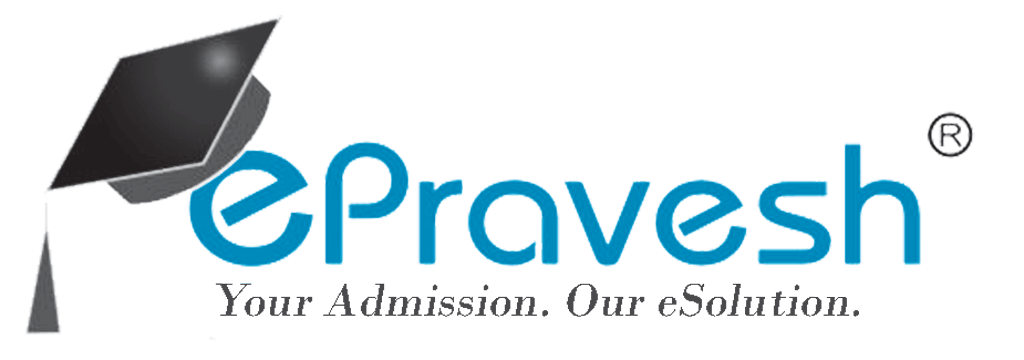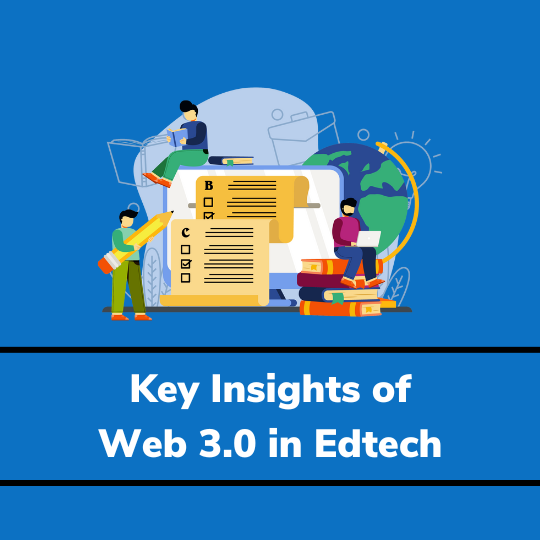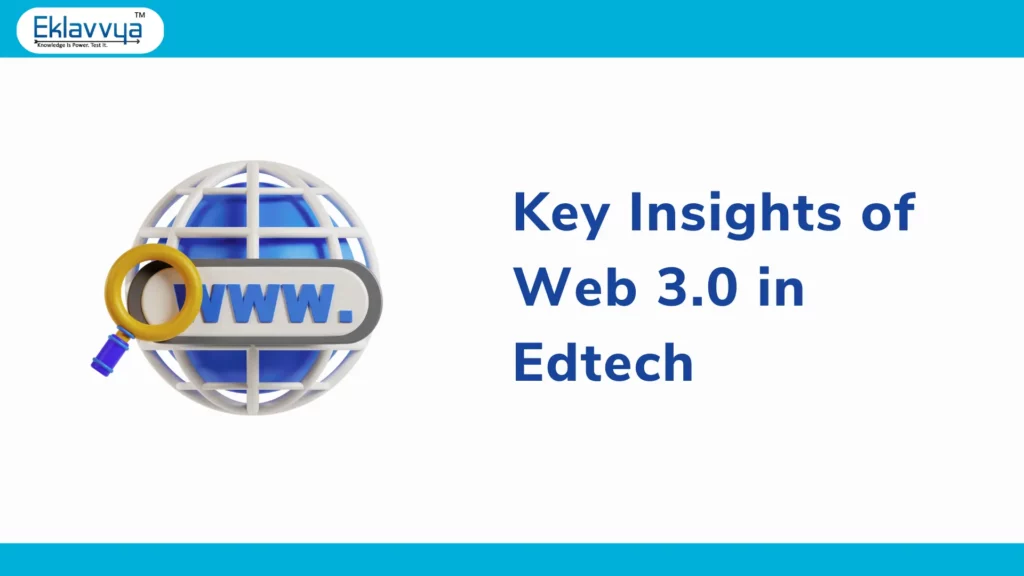
Article Contents
Introduction
As everyone started adopting online learning and EdTech tools to enhance learning, we had the help of Web 2.0. Web 2.0 refers to all the websites that offer user-generated content and participatory culture. But the future demands even more powerful web versions.
This is where Web 3.0 was introduced. Web 3.0 brings about a much more significant change in the way people learn online. Web 2.0 has always been a great helping hand, especially with personalized learning, but Web 3.0 only brings more ease while keeping the good traits of Web 2.0 intact.
What changes have we seen in the last couple of years?
Earlier- We used to scroll through websites to get information
Now- Search engine itself gives answer on search page itself
Earlier- Websites were totally made up of text content
Now- Websites are made with image, animation and video content
What comes next?
Web 2.0- Social networking, ease of accessibility and user experience
Web 3.0- Personalized content, interactive experience and dynamic websites
Edtech will show long growth in the coming years.
As of 2023, the global Edtech market is valued at $300 billion in 2025 and is projected to reach $1 trillion by 2028.
Online and distance education enrollment is expected to reach over 300 million by 2025, driven in part by the COVID-19 pandemic.
As of 2021, there are more than 7,000 educational apps available in the App Store and Google Play, with an average of 50 new education apps added each day.
‘Online and web-based learning is preferred by students
According to a survey conducted in 2020, around 55% of students prefer using technology to enhance their learning experience.
As of 2021, there are over 500 blockchain-based educational platforms and projects, with the majority focusing on providing educational content, managing student records and accreditation, and facilitating the transfer of educational credits.
‘Technologies like Blockchain, AI, ML, and VR are positively impacting Edtech’-
According to a study by IBM, over 60% of educators believe that blockchain technology will play a significant role in the future of education.
In 2020, the total value locked in educational blockchain projects surpassed $100 million
As of 2021, over 30 universities and colleges have begun accepting blockchain-based credentials, including MIT, Duke University, and the University of Nicosia.
As of 2021, Decentralized Autonomous Organizations (DAOs) are being used in Edtech to enable decentralized governance and funding of educational projects, creating new opportunities for community-driven education and collaboration.
With all these trends in place, it is evident that Web 3.0 will be a boon to the Edtech industry.
What is Web 3.0?
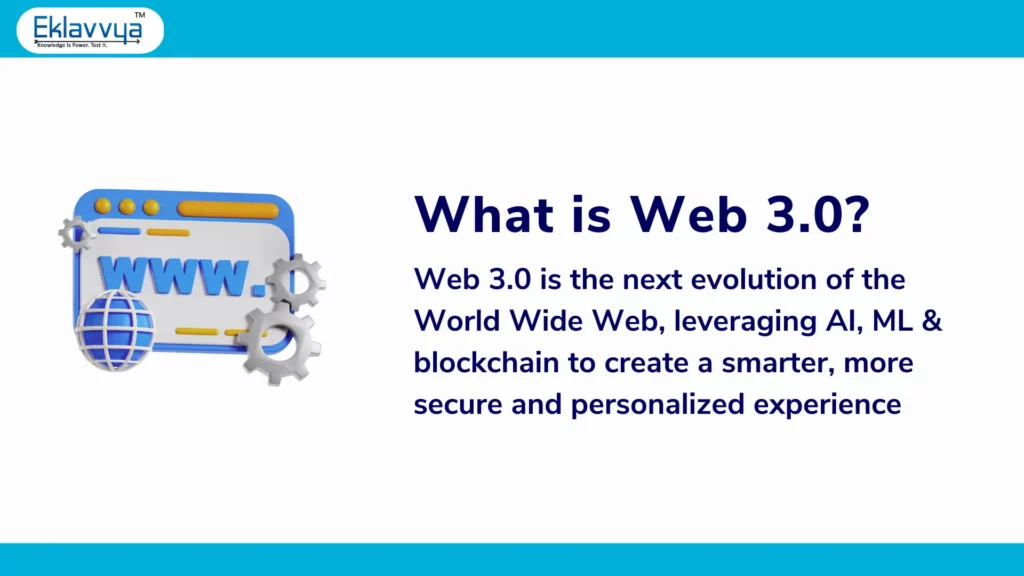
Web 3.0 or Web 3 is the third generation of the World Wide Web. It provides greater utility for its users and has the vision of being more open and decentralized as a web. This becomes highly significant as it comes along in the era of 5G technology and the metaverse. Together, these technologies have the potential to change the Edtech sector as a whole.
Web 3.0 is here to offer AI machine-learning websites. These will now give much more helpful search results based on the context of your search rather than the keywords.
Users will own their own creations, and digital objects they purchase instead of other platforms owning them.
Web 3.0 brings about a much more personalized learning and smarter search engine which may help in any task that may come across. The idea of using AI in Web 3.0 is that AI will help provide fast and user-relevant data. These AI tools will filter through multiple platforms to provide the data that it thinks the user may need according to their searches.
While Web 2.0 and Web 3.0 are similar with pretty similar backgrounds the way they tackle challenges are far different. The major difference is that Web 2.0 focuses more on writing and reading content while Web 3.0 is a semantic web that focuses more on creating content.
Web 2.0 was the web we have been currently using too and while it makes it easier to generate content with a click of a finger it may not be enough. Web 3.0 will bring a much more efficient environment with its AI-integrated web-based on sophisticated software.
Blockchains, user-relevant data, and the semantic web are everything that Web 3.0 will offer and Web 2.0 has offered. Based on these principles from Web 2.0, it will only grow further.
What more features and benefits will it provide other than this?
While Web 3.0 may look like it will provide the same resources Web 2.0 did, it is not the case. The biggest difference between Web 3.0 and Web 2.0 is that Web 3.0 has been built on decentralization.
Web 3 or Web 3.0 promises a much safer and easily accessible web.
With that being said here are some of the benefits that it brings to education and online learning:
1. Improved Experience with Tech tools:
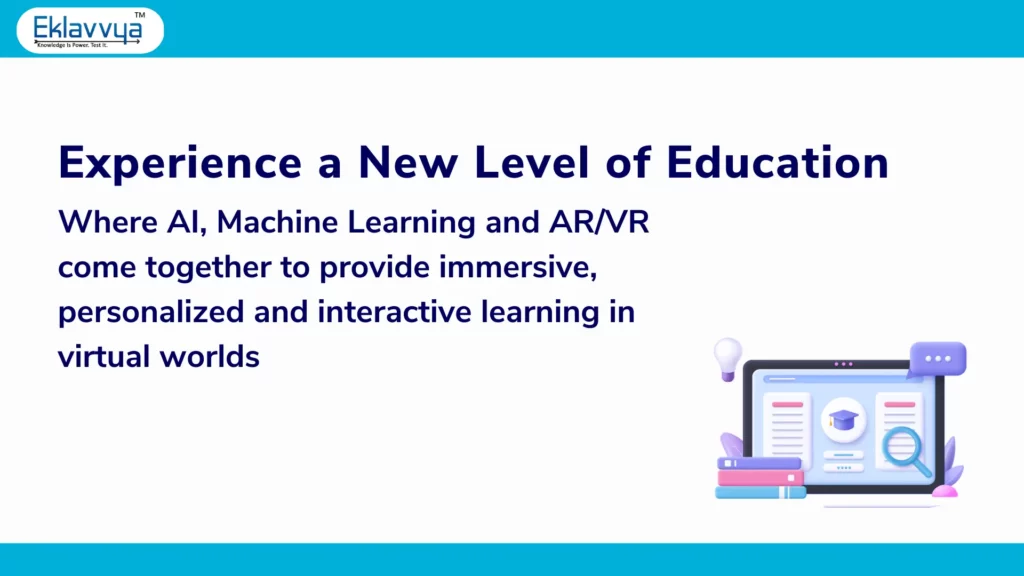
Web 2.0 revolutionized the way we learn by providing access to an array of educational resources such as podcasts, RSS feeds, video sites, and bookmarking, creating an efficient learning experience. However, Web 3 takes this a step further by introducing advanced technologies like AI, Machine Learning, and virtual and augmented reality, which will provide a more immersive and personalized learning experience.
The integration of AR/VR tools will allow for a more visual way of learning and understanding, and the use of AI and Machine Learning will enable students to connect and interact through virtual worlds, like the Metaverse. Web 3.0 will bring a significant shift in the way we learn and provide opportunities for more innovative and effective learning experiences.
2. Personalisation of the content with AI and content security:
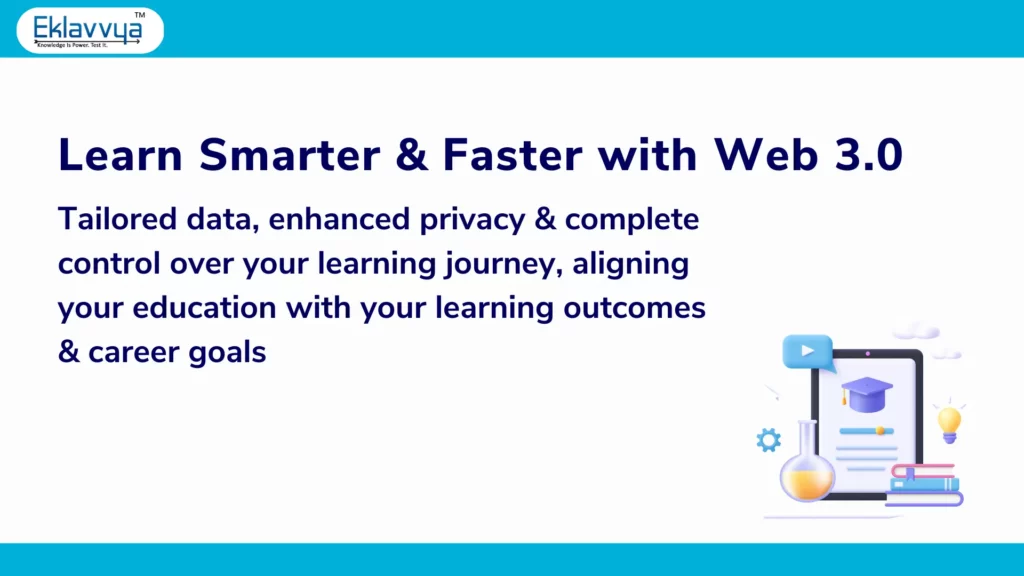
“Web 3.0 will be the futuristic step in giving back control to the users”
Web 3.0 offers the ultimate feature of personalization by providing users with more tailored data and allowing for smarter and faster-personalized learning. This becomes especially significant as the upcoming era is undoubted of personalized learning.
Additionally, Web 3,0 addresses privacy and security concerns by providing anonymity and giving users complete control over their data. This feature will enhance personalization and provide users with relevant and user-friendly data, allowing them to customize their learning based on their interests and career goals.
Furthermore, it empowers users to make informed choices about their learning by allowing them to choose what they want to learn that aligns with their interests and career goals and customize their learning experience accordingly
3. Interactive learning at its peak:
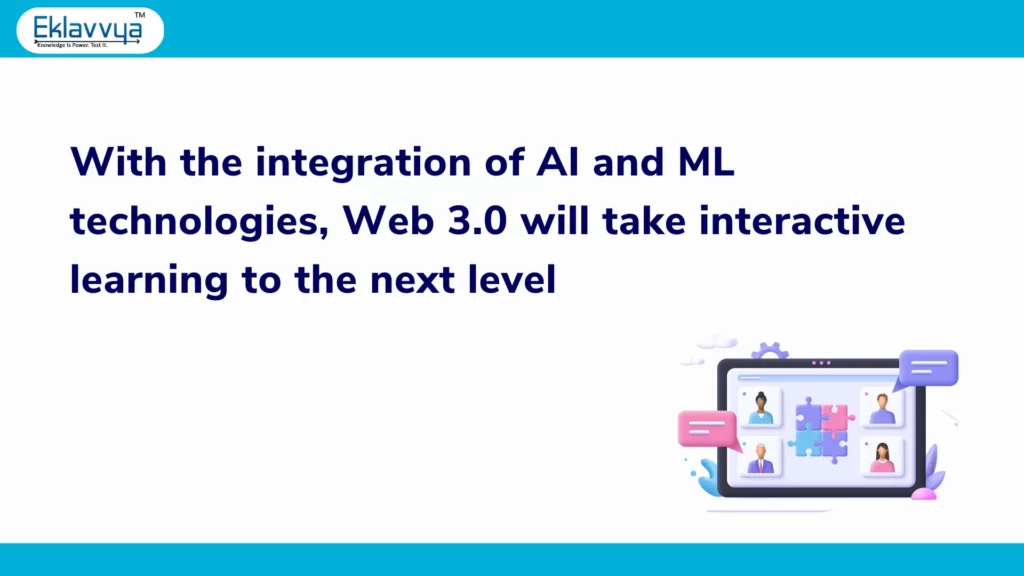
With the integration of AI and ML technologies into the web, web 3.0 will bring interactive learning to the next level. Another breakthrough technology, ChatGPT, and similar tools may show their presence across the web for better web-user interaction.
Each website could potentially turn into an interactive platform when integrated with such a tool and will surely change the way people use the internet.
Such integration will make websites more accessible, for example, if a person wants to know- ‘What is the name of enzymes used in PCR diagnostic?’
The person need not read through the article to know the answer, the person can go to a relevant website and ask the bot for an answer, which makes the overall web experience highly efficient.
Conclusion:
Web 3 is still in progress, it is predicted it will be a revolution for the education sector. It will offer advanced technological resources within traditional systems.
Top Universities like Massachusetts Institute of Technology and Stanford University have set out to promote the use of Web 3 and integrate it into online and machine learning.
Web 3 or Web 3.0 is something that an institute should consider integrating into learning and teaching. It has the potential to not only help personalize the learning of a student but also bring about AI and EdTech tools which will change the way of learning forever.
It will promote the use of VR/AR and virtual worlds and Metaverse to promote efficient learning and also eradicate the challenges that Web 2 brought about. It will enable users to have a personalized and secure web to surf through.
These benefits should be taken into consideration as we progress to soon adapt to Web 3.0 and the various features it brings in. Going further, the advancements in technologies like AI, ML, and VR will further enhance the way we use the web for learning.
